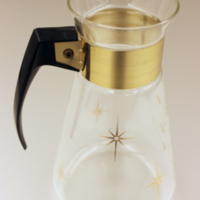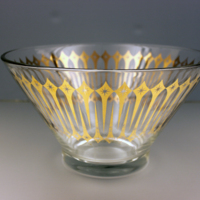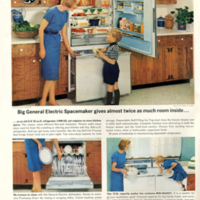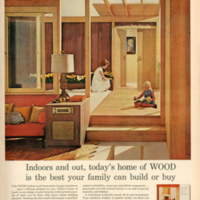The Cold War Comes Home for Supper
Not only were American politics and diplomatic relations greatly affected throughout the Cold War, but so were the home lives, shopping habits, and domestic pursuits of Americans. This trickledown effect manifested in some of the most recognizable design motifs and elements of American consumerism that came to define the 1950s and 1960s specifically, also known as the Atomic Design Era and the Space Age. For more than two decades Americans lived, ate, and entertained in spaces directly influenced by this international conflict.
In the 1950s, Atomic Design was all the rage. Architecture, fashion, and advertisements were influenced by the atomic aesthetic, its hallmarks being atom motifs and abstract organic forms. With the Space Race underway by the end of the 1950s, Space Age design began to overlap with Atomic Design, and eventually overtook it by the 1960s. Featuring starbursts, sputniks, and all things space-related, Space Age motifs graced everything from coffee pots to cars, heavily influencing American homes, inside and out.
During this period, homemaking was elevated to a new status with “the technology of Tomorrow,” such as shiny new Frigidaires, improved microwaves, and fancy dishwashers, making the American housewife’s job easier than it had ever been (or so it was advertised to her). Holidays were no exception, and with aluminum trees, reflector ornaments, and greeting cards featuring Santa in a rocket instead of his traditional sleigh, the Cold War seeped into Americans’ Christmas memories.
Images of Atomic Design and Space Age homes may look kitschy nowadays, but the widespread influence of this American response to the Cold War in popular culture cannot be understated. Just note this heated exchange between the Soviet leader Nikita Khrushchev and U.S. Vice President Richard Nixon in 1958 as they toured the “Miracle Kitchen” at the American National Exhibition in Moscow that perfectly encapsulates this particular pocket of the Cold War:
Kruschev: “Your capitalistic attitude toward women does not occur under Communism.”
Nixon: “I think this attitude toward women is universal. What we want to do is make life more easy for our housewives…”






